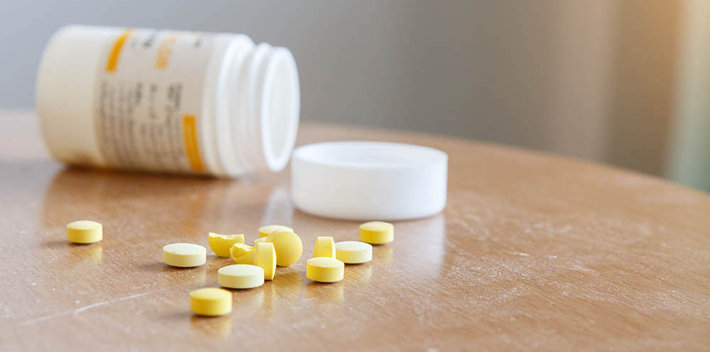Effects of Oxymorphone

If your doctor is prescribing oxymorphone for you, the drug you are going to take is probably called Opana, the brand name for an oxymorphone formula. Opana is a very popular drug among opiate addicts—or was until the formulation was changed to make it abuse-resistant.
In February 2012, Endo Pharmaceuticals released an Opana formulation with the “Intac Technology.” This means that the medication in this pill is embedded in polyethylenoxide, a type of plastic that permits the medication to leak out into the body once it has been swallowed.
After a Food and Drug Administration review, however, it was discovered that the abuse-resistant formulation did not prevent opiate addicts from grinding down, dissolving and injecting the drug. Fifteen people who managed to inject material from this pill were hospitalized in Tennessee alone with a condition called thrombotic thrombocytopenic purpura—that is a complicated term describing a problem where small blood clots develop in narrow vessels throughout the body. This problem leads to widespread organ damage, most particularly for the kidneys.
This continued manipulation of Opana by those seeking to abuse it, along with other risks, prompted the FDA to request the manufacturer to remove the drug from the market in 2017.
Oxymorphone and the Effects of Abuse and Overdose
Like other opiate and opioid pain relievers, oxymorphone suppresses the breathing and heart rate as it relieves pain.
Oxymorphone Effects
Specifically, effects of Opana include:
- Sedation
- Euphoria
- Weakness
- Dizziness
- Nausea
- Vomiting
- Poor coordination
- Dry mouth
- Itching
- Sweatiness
- Constipation
- Slowed—or even stopped—breathing
- Slow pulse
- Low blood pressure
Prescribing information for Opana warns that the drug can induce or worsen the tendency to suffer convulsions. If a person is taking certain types of stomach acid suppressors, that drug (cimetidine) can increase the ability of the opiate to suppress their respiration which could lead to respiratory arrest.
If Opana or hydromorphone is abused along with any other drug that also suppresses breathing or heart function, the results could be fatal. Therefore, Opana should not be mixed with barbiturates (sleeping pills), benzodiazepines like Xanax or Valium, or alcohol.
Addiction to Oxymorphone
In 2010, after the reformulation of OxyContin stalled opiate addicts who favored that drug, Opana gradually became a big favorite. Pharmacy thefts increased, and in towns from New York City to Akron, Ohio, more people began trying to get their hands on oxymorphone. By 2011, there were 33 Opana overdose deaths in Louisville, Kentucky alone. The addiction to this drug is so strong that it drives many other types of criminal acts to get the money for more pills.
What has been occurring as these opiates are reformulated is that many people turn to heroin to keep withdrawal sickness from kicking in. They may overdose unintentionally if the heroin they buy is more potent than they expect or mixed with the highly potent opioid Fentanyl.
The Only Solution
When a person loses control of his life to Opana, what is needed desperately is drug rehab that creates lasting sobriety. The Narconon drug rehabilitation program is available in many locations across the USA and around to world to provide help for those who lost the battle with opiates. In a ten to twelve-week program (for most people), it is possible to recover from the terrible changes imposed by addiction and blossom into honesty and sobriety once again.
If addicted long enough, most opiate addicts lose everything to addiction. They lose their marriages, their families, their jobs or businesses and certainly their self-respect. It takes time to repair the relationships and rebuild the self-respect that was lost. It requires the building of new life skills to replace the ones that were destroyed by a continuous stream of harmful acts. In the Narconon drug rehab program, a person has the time to address the harm that was done and recover his (or her) self-esteem.
A person does not graduate from the Narconon program until he shows he has learned the sober living skills he is going to need. When he has achieved those skills, he also has the confidence that he is going to be able to build the new life he really wants, as soon as he gets home.
Get more information on the Narconon program today.
References:
 ®
®